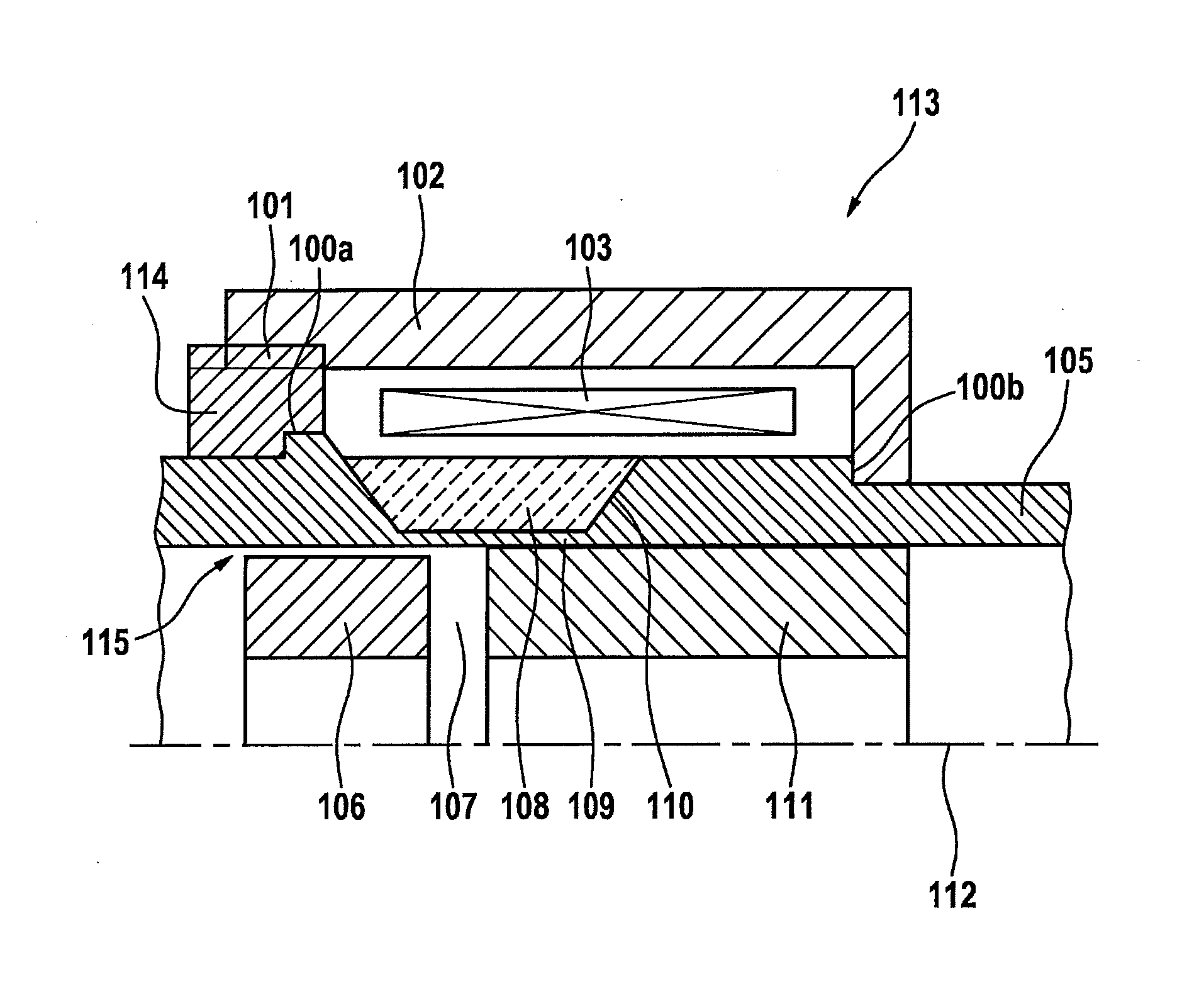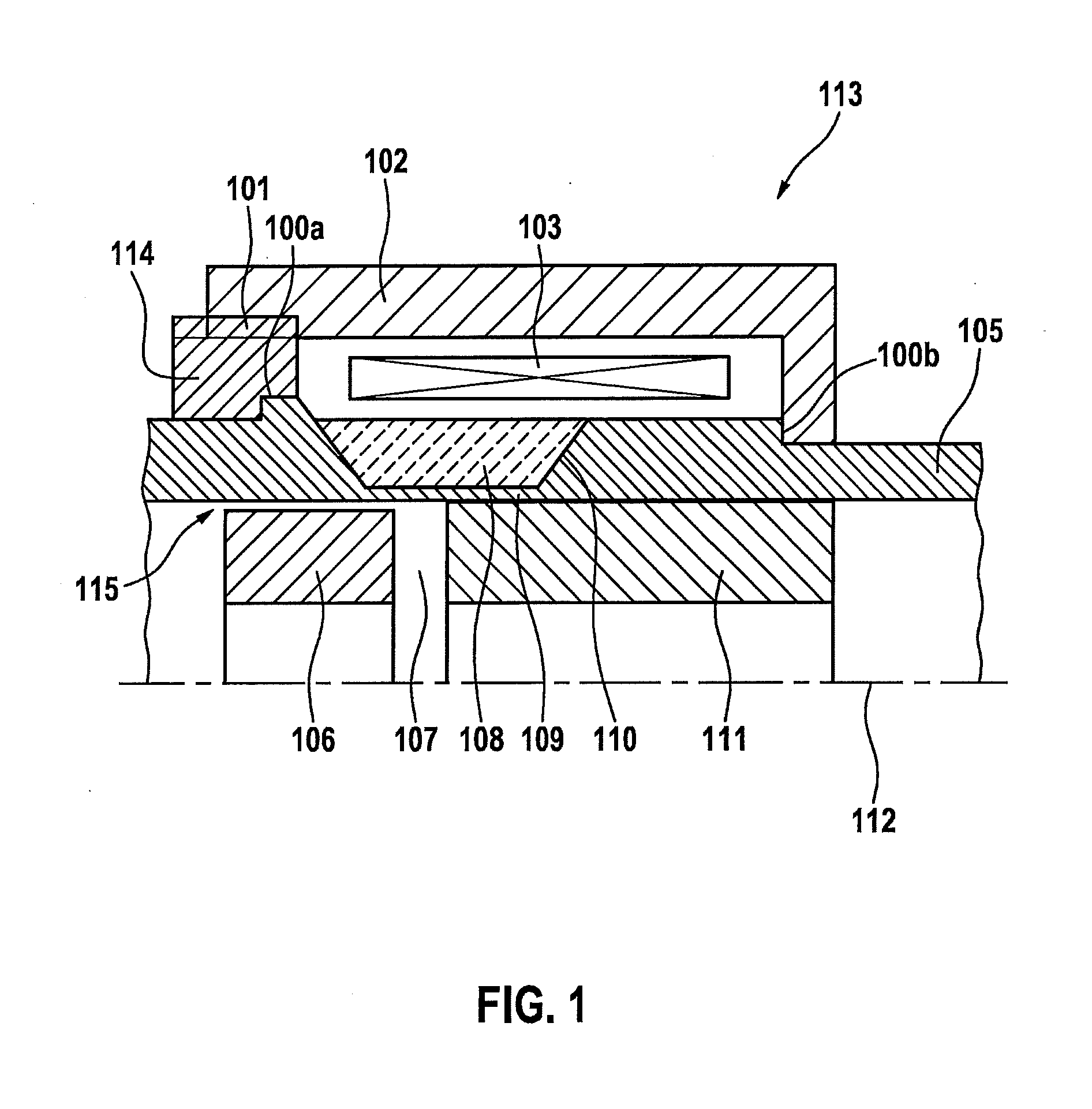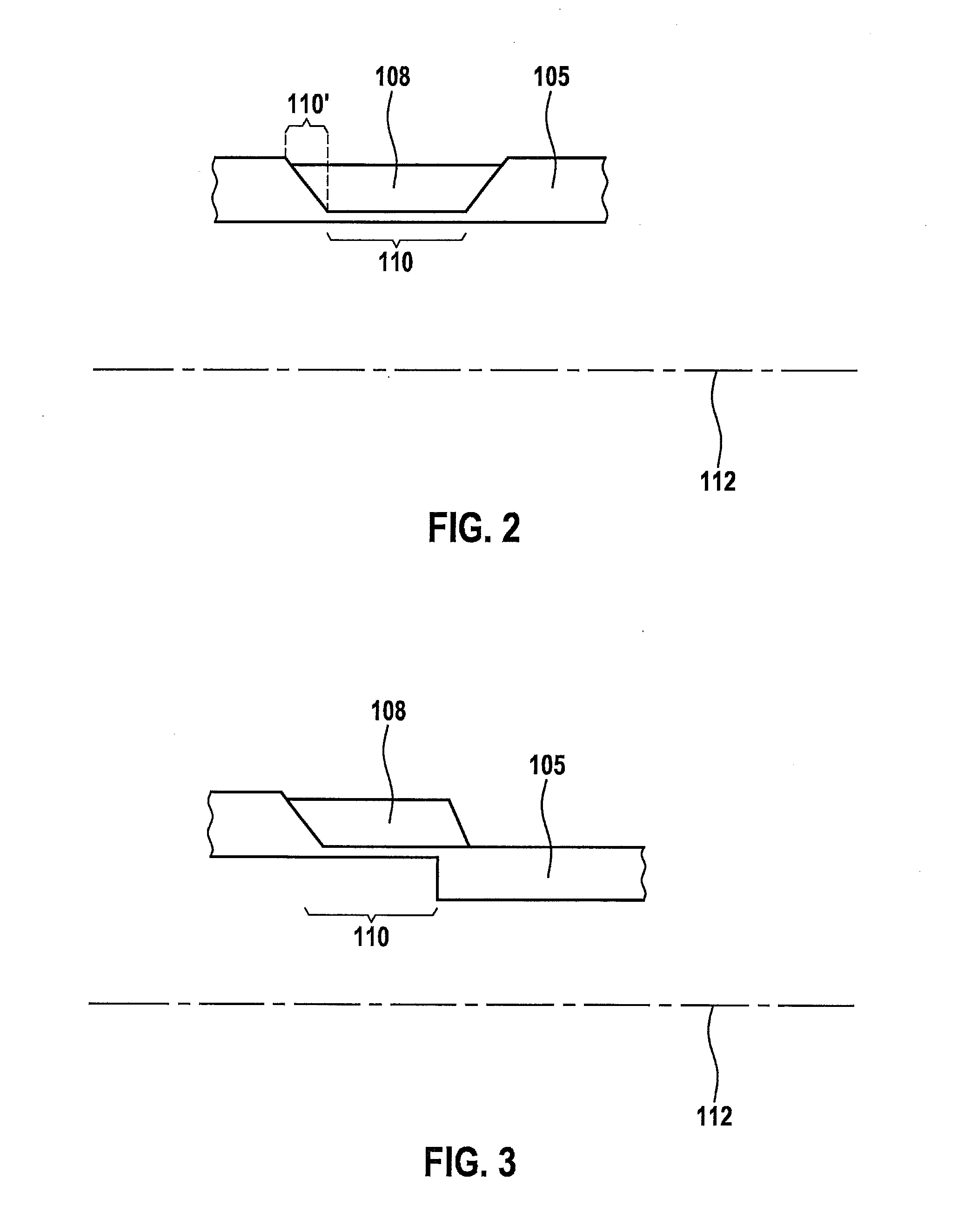Method for manufacturing a magnetic separation for a solenoid valve
a solenoid valve and magnetic separation technology, which is applied in the direction of valve operating means/release devices, machines/engines, etc., can solve the problems of high cost of joining parts, affecting the dynamics of force build-up and decay, and reducing the magnetic force obtainable, etc., to achieve high-efficiency magnetic separation and inexpensible production
- Summary
- Abstract
- Description
- Claims
- Application Information
AI Technical Summary
Benefits of technology
Problems solved by technology
Method used
Image
Examples
first embodiment
[0028]FIG. 2 schematically shows a portion of solenoid valve 113 variant of the present invention also illustrated in FIG. 1; thin-walled region 110 forming an annular groove in sleeve 105. This means that in the axial direction, sleeve 105 has, for example, a constant inner diameter, and also in the axial direction, the sleeve has a lower outer diameter in the area of thin-walled region 110 than in front of and after thin-walled region 110, in the axial direction; it being provided, in particular, that the change in (outer) diameter occur gradually via a beveled region 110′.
[0029]However, as an alternative to that, according to a further specific embodiment (also not shown), the present invention may also provide that the change in (outer) diameter occur nearly without a transition (that is, a step change in diameter occurs).
second embodiment
[0030]FIG. 3 schematically shows a portion of a solenoid valve 113 variant of the present invention; thin-walled region 110 not forming an annular groove in sleeve 105, but being formed in such a manner, that a change in the inner and outer diameter of sleeve 105 is provided in the area of the ends of thin-walled region 110. This means that the inner diameter of sleeve 105 changes in the axial direction at one end of thin-walled region 110, and that the outer diameter of sleeve 105 changes in the axial direction at the opposite end of thin-walled region 110; in the case of this change in diameter as well, either a gradual change in diameter being able to be produced (along the axial direction), or else a step change in diameter. In the illustrated example of FIG. 3, a gradual diameter change is exemplarily shown in the case of the change of the outer diameter (in the left part of the figure), and a step change in diameter is exemplarily shown in the case of the change of the inner ...
PUM
| Property | Measurement | Unit |
|---|---|---|
| melting point | aaaaa | aaaaa |
| wall thickness | aaaaa | aaaaa |
| wall thickness | aaaaa | aaaaa |
Abstract
Description
Claims
Application Information
 Login to View More
Login to View More - R&D
- Intellectual Property
- Life Sciences
- Materials
- Tech Scout
- Unparalleled Data Quality
- Higher Quality Content
- 60% Fewer Hallucinations
Browse by: Latest US Patents, China's latest patents, Technical Efficacy Thesaurus, Application Domain, Technology Topic, Popular Technical Reports.
© 2025 PatSnap. All rights reserved.Legal|Privacy policy|Modern Slavery Act Transparency Statement|Sitemap|About US| Contact US: help@patsnap.com



